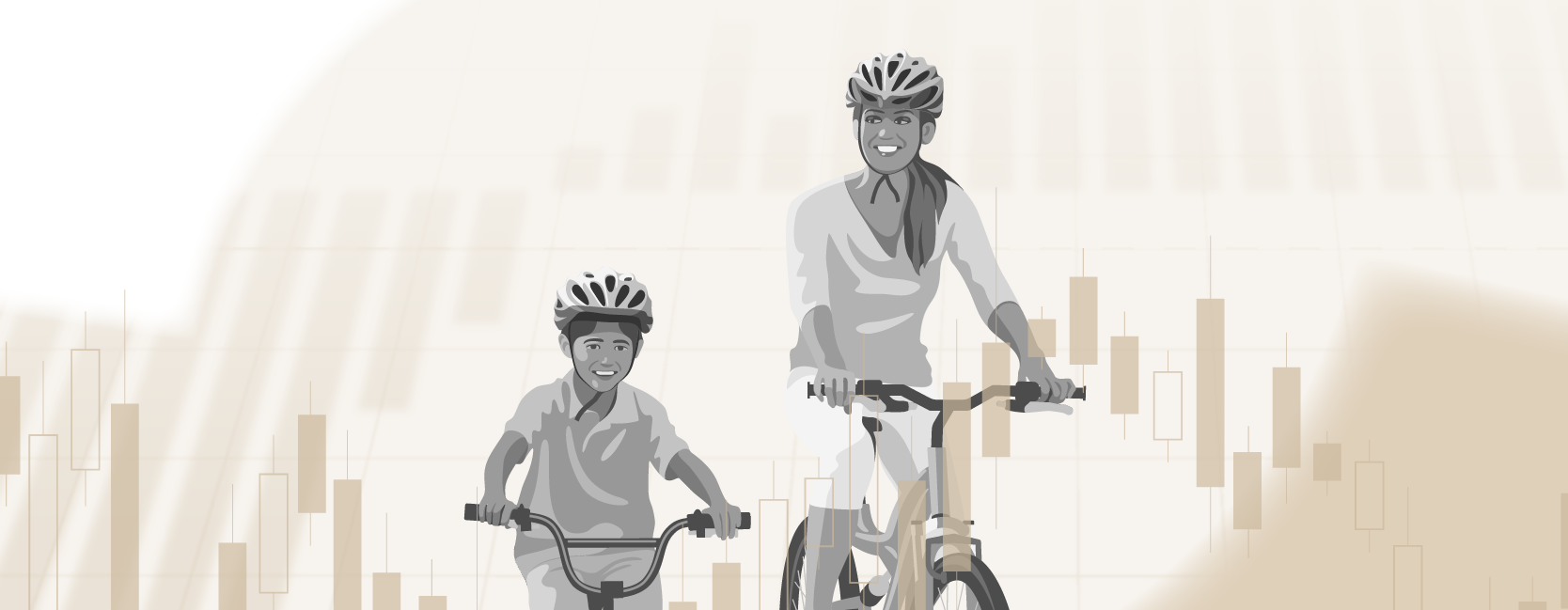Have you ever considered setting up a children’s pension? If it’s something you are thinking of, this Moneyfarm guide will tell you how to go about it and how it can benefit your child.
| Can a child set up a pension in the UK? | No, it is set up by a parent or guardian |
| Can I start a pension for my child? | Yes, you can |
| Why would you set up a child’s pension? | For financial security |
| What are the alternatives to children’s pensions? | Premium bonds, children’s savings account, Junior cash ISA, Junior stocks and shares ISA and a General savings account. |
Although it might sound odd at first because retirement is so far in the future, investing in children by setting up a pension can benefit young people. As children enter adulthood, their thoughts on saving or investing for the future may focus on shorter-term goals – things like university fees, buying a car or a property. As a result, a pension is much lower down their priority list.
But you, being older and wiser, will appreciate the benefits of a good pension, and setting up a children’s pension early in the child’s life can lead to the accumulation of a very lovely pension pot by the time the little one reaches retirement age.
Setting up a children’s pension
A children’s pension fund, also known as a Junior SIPP (Self Invested Personal Pension) or a personal or stakeholder pension, can only be set up by the child’s parents or legal guardians. You can set up a pension for children as soon as they are born.
What are the rules for children pensions
Apart from only a parent or legal guardian being allowed to open pensions for children rule, other rules include the following:
- Once a child’s pension has been set up, anyone, including grandparents, can contribute.
- When setting up a child’s pension fund, you must nominate a beneficiary or beneficiaries. Should the child die before accessing the fund, it passes to the designated beneficiary.
- Parents or legal guardians can manage a children’s pension plan until the child’s 18th
- When the child turns 18, they take control of the account and can decide on the type of assets the pension contributions are invested in.
- The pension fund is locked in place until the “child” reaches 55, rising to 57 in 2028.
- The annual Junior SIPP contribution allowance for the tax year 2022-2023 is £3,600.
- The minimum contribution allowance is generally £25 per month.
What to consider before setting up a children’s pension
Whilst setting up a children’s pension is an admirable thing to do, it does depend on individual circumstances. Therefore, you should only proceed after you have considered relevant financial matters – such as:
- Do you have “rainy day” savings set aside for essentials and unseen emergencies?
- Do you have life insurance in place to protect your family in the event of your death?
- Are your financial retirement plans up to date?
Is setting up a Junior SIPP a good idea?
There are downsides as well as upsides to starting a pension for children. Let’s take the upsides first. They include the following:
- 20% tax relief on contributions. You can contribute up to £2,880 per annum, and the government contributes 20% taking the total pension contributions to approximately £3,
- Compound interest is applied to children’s pension funds, meaning that even relatively small contributions can grow substantially in value, year on year.
- It gives the child an incentive to become engaged with their financial future.
- The child has one less thing to worry about in the future.
The downsides of a Junior SIPP
- The money is locked away until the child reaches 55 (up by the end of the 2027 tax year – 57 from 2028). This is something the child may be unhappy about if they are struggling to pay university fees or trying to save a deposit for a property.
- The value of investments can fall and rise, so the fund’s value might be worth less than was envisioned.
- You could be overstretched if you don’t research your financial position properly.
How do you set up a child pension?
Children’s pensions can be set up by approaching a pension provider directly or via an online investment platform. Pension providers and online platforms charge fees that can vary enormously, so you must do your research well, or the child’s fund could be significantly affected.
Junior SIPPS might be of interest to parents or legal guardians who have knowledge of investing. If you don’t want to be “hands-on,” you can go for a ready-made personal pension portfolio that the pension provider has created.
Another option is a children’s stakeholder pension. However, these tend to offer a more limited choice of investments.
What happens to a Junior SIPP when the child reaches 18?
As mentioned earlier, when the child reaches 18, control of the SIPP passes from the parent or legal guardian to the child. However, that control only relates to the contributions invested. Because this type of account is a pension, it cannot be accessed until the “child” is of legal access age – 55 at present, rising to 57 in 2028.
Other options when saving for a child
Regarding pension for children, one of the best options, other than a Junior Self Invested Personal Pension account or personal or stakeholder pension account, is a Junior ISA (JISA). Like Junior SIPPs or personal stakeholder pensions, Junior ISAs (also the best ISAs for a baby) can comprise stocks and shares.
But because Junior ISAs are not pensions per se, once the child reaches 18, they can withdraw funds if needed when they assume control of the fund. Being able to withdraw funds can be treated as both an advantage and a disadvantage depending on your point of view.
Another advantage of a JISA is that you can contribute up to £9,000 per annum.
Also, although it’s not one of the out-and-out pension options, if you are thinking about starting a pension for a child, it will give them a head start in life, particularly if it’s a stocks and shares JISA and it’s set up shortly after the child is born. It’s one of the best ISAs for a baby.
How a pension sharing order can for used for children’s pension contributions
Sadly, some marriages or partnerships fail. If one of the partner’s pension funds has accrued a pension pot of significant value, a pension-sharing order can be drawn up. When the partner looking after the child or children reaches 55, they can withdraw up to 25% of their share tax-free and use it to make contributions to their children’s pensions.
Can my children inherit my pension?
After you have passed on, your family or any named beneficiaries can receive any funds remaining in the pension pot. It’s a good idea to check out the inheritance tax rules to see how this could affect any beneficiaries, particularly children.
Final thoughts on children’s pensions
The earlier in life a pension is set up, the better, and when better than soon after a child has been born. Long-term compound interest year after year can considerably increase the fund (even a relatively small one). However, there is one thing you must always bear in mind, and it is that the value of investments can fall as well as rise.
FAQ
When can a child withdraw money from their pension?
Children’s pension, like any other private pension, can only be accessed once an individual reaches the age of 55. In 2028, the minimum age is set to increase to 57, with a possibility of further increases in the future. Remember this when considering how to best support the child financially. A Junior ISA or a child’s trust is an alternative for early funds withdrawal.
Can a relative or family friend set up a pension for my child?
Unfortunately, only a parent or guardian can set up a child’s pension. However, a relative or family member can contribute to a child’s pension.
What are the advantages of a child’s pension?
A pension for children boosts a child’s savings and gives a child financial security. There is a 20% tax relief on all pension contributions into a Junior SIPP. The long duration of children’s pensions ensures the growth of wealth through compound interest. Setting up a pension for a child can be an avenue to educate the child about money, savings and investing. A child could qualify for a higher rate of tax relief on their parent’s contribution when they submit an annual tax return and are classified as a higher-rate taxpayer.
*As with all investing, financial instruments involve inherent risks, including loss of capital, market fluctuations and liquidity risk. Past performance is no guarantee of future results. It is important to consider your risk tolerance and investment objectives before proceeding.





